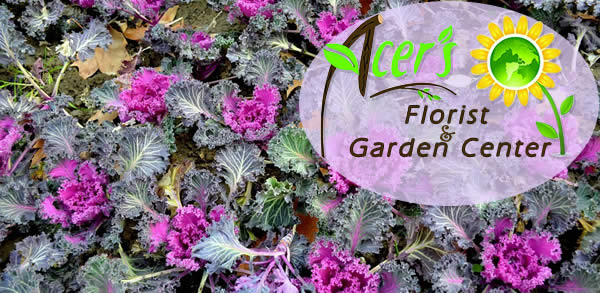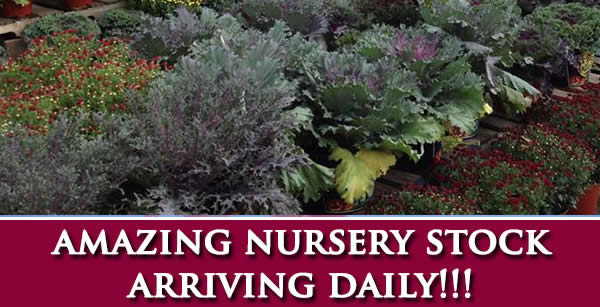
It's undisputed--everyone loves flowers. But flowers are not the only way to introduce vibrant beauty into the landscape.
We would like to introduce you to a couple of beautiful and unique candidates to include in your flower garden this fall--ornamental cabbage and ornamental kale.
Ornamental cabbage and kale are related to the cabbage and kale we eat; in a pinch, you actually could eat the ornamental types even though they are not as tender and flavorful as their culinary cousins.
But what they lack in tastiness, they more than make up for in their beauty.
Even though they are sometimes referred to as flowering cabbage and flowering kale, it is their leaves that provide the color.
The arrangements of the leaves on both types form a flower-like rosette which lasts all through the cool season, unlike actual flowers. Only when the weather begins to warm in the spring, do they produce flowers--you will notice the plant "stretching" and a vertical flower-stalk emerging from the center.
This is your signal that it is time to remove them and replace them with a warm-season annual.
Because of the plant's propensity to flower and set seed when the weather is warm, it is best to wait to plant it until you can be fairly certain that the weather has cooled off sufficiently in the fall.
The color of the foliage, which ranges from a mixture of purple, rosy-lavender and white, will become more and more vibrant as the weather gets cooler. You will notice the most vibrant colors after periods of frost.
You will also avoid having to deal with some of the pests common to the cabbage family (such as cabbage loopers) by postponing your planting until the weather has cooled.
While ornamental cabbage and kale can grow to a height and width of about 18", it is best to purchase larger plants that are about the size you would like them to stay. The reason for this is that if they are root-bound (which they quite often are in containers) they will not grow much larger.
Look for plants that are stocky and full rather than tall and narrow, with the color combinations that you like. If you select a plant that fits all your requirements but has a "trunk" before the foliage begins, simply plant it deeper, up to the first set of leaves; ornamental cabbages and kales are among a very small group of plants that will tolerate having the soil level raised along the main stem.
What is the difference between ornamental cabbage and ornamental kale? The leaves of ornamental cabbage have smooth margins while ornamental kale has fringed or serrated leaves.
Pick whichever plants appeal to you, using all one type or mixing them for interest. You will get the most "bang for your buck", however, if you use them in groupings or mass plantings, rather than sporadically planted throughout the flower bed or lined up like soldiers.
If your flower bed has some depth to it, a great combination would be groupings of ornamental cabbage and/or ornamental kale with a foreground planting of pansies.
Container planting is another great use for these colorful plants.
In this instance, you can get away with using one plant as the main focal point in the pot, possibly surrounded by smaller annuals such as pansies, violas or dianthus.
Whether planting them in a container or in the ground, be sure to choose a sunny location that will receive regular water with good drainage. They prefer a slightly acidic soil, rich in organic matter.
Depending on the weather, ornamental cabbages and kales can last through the winter, only finally "giving up the ghost" as the weather warms in the spring.
Click to print this article.



















